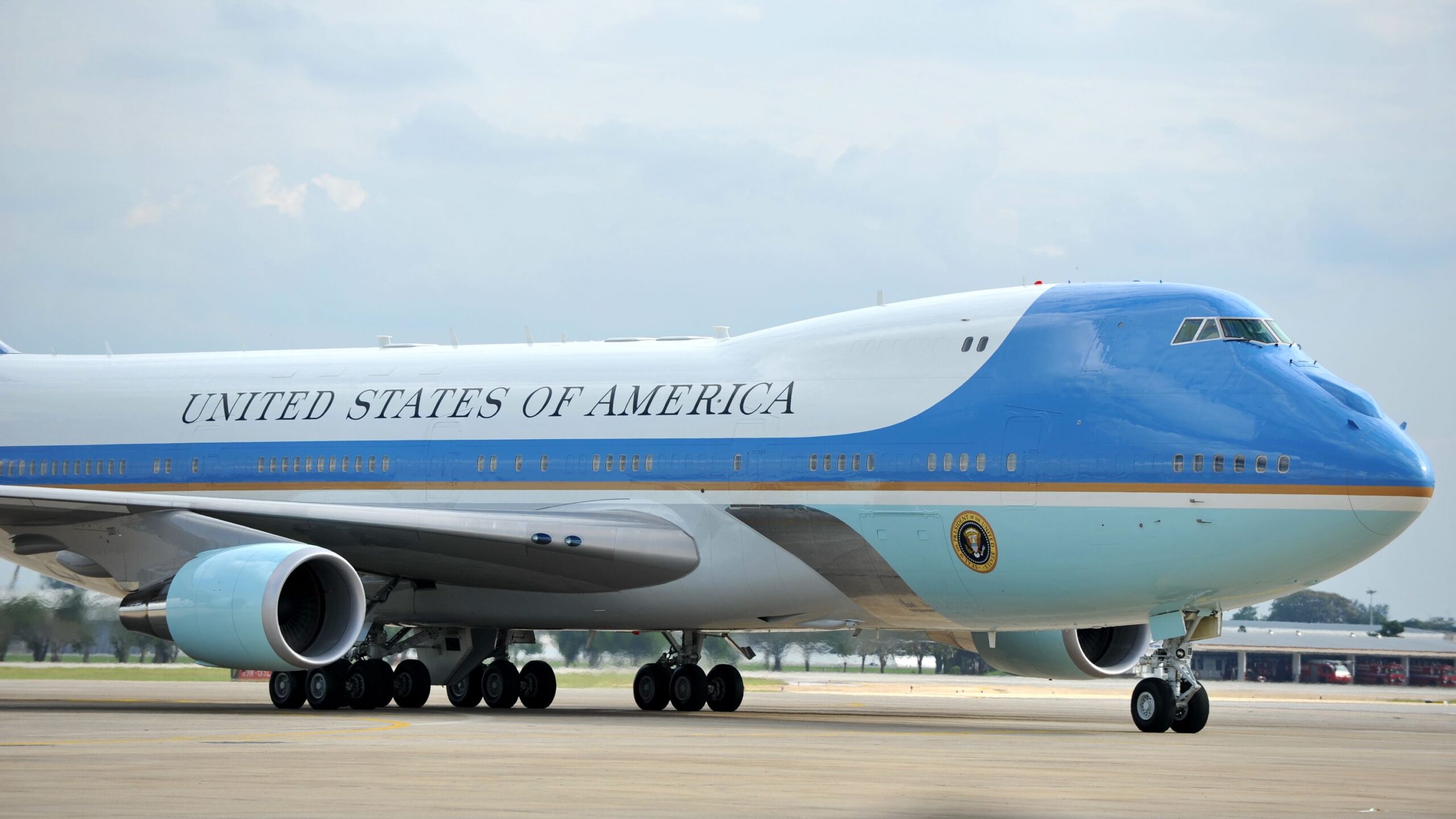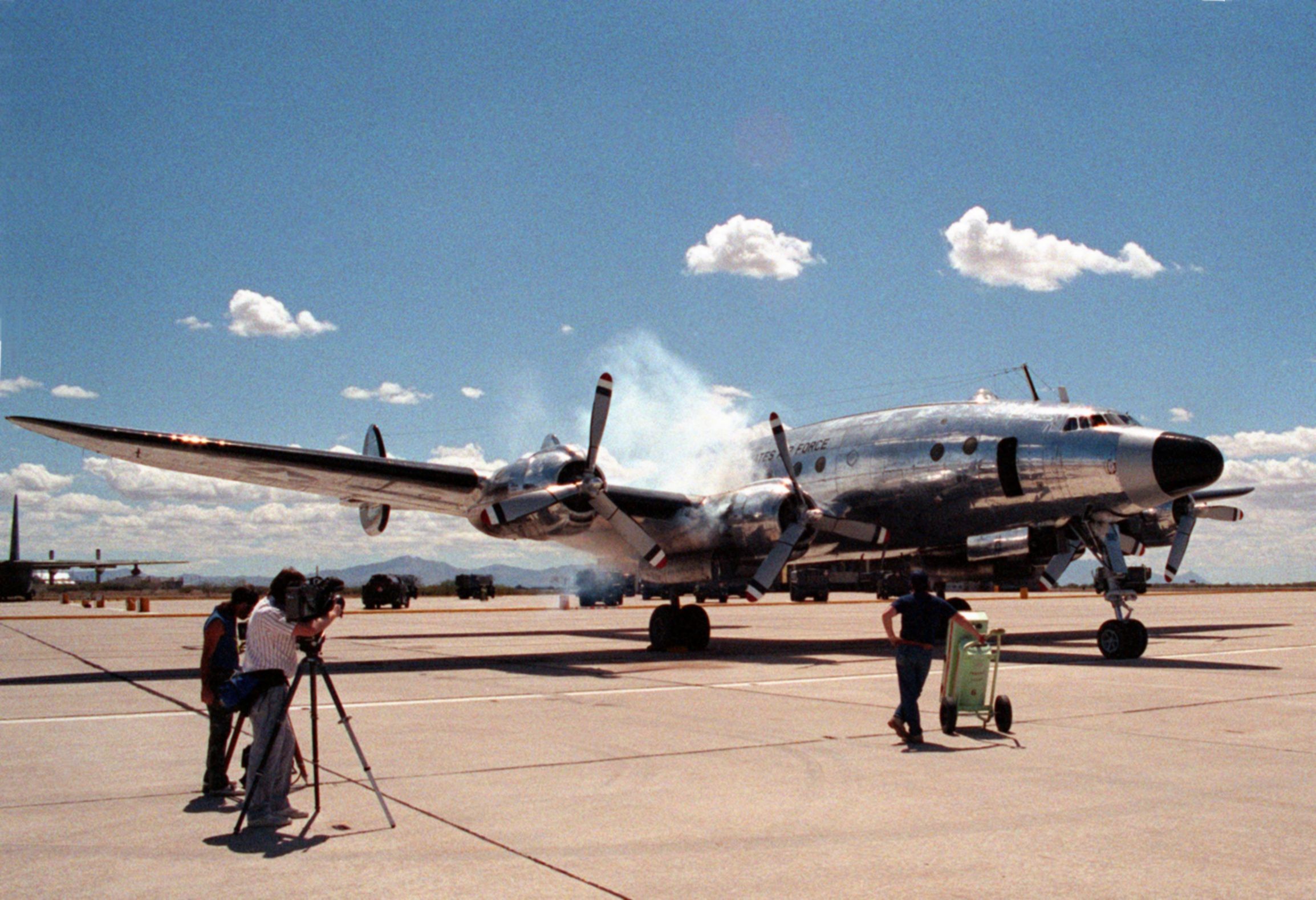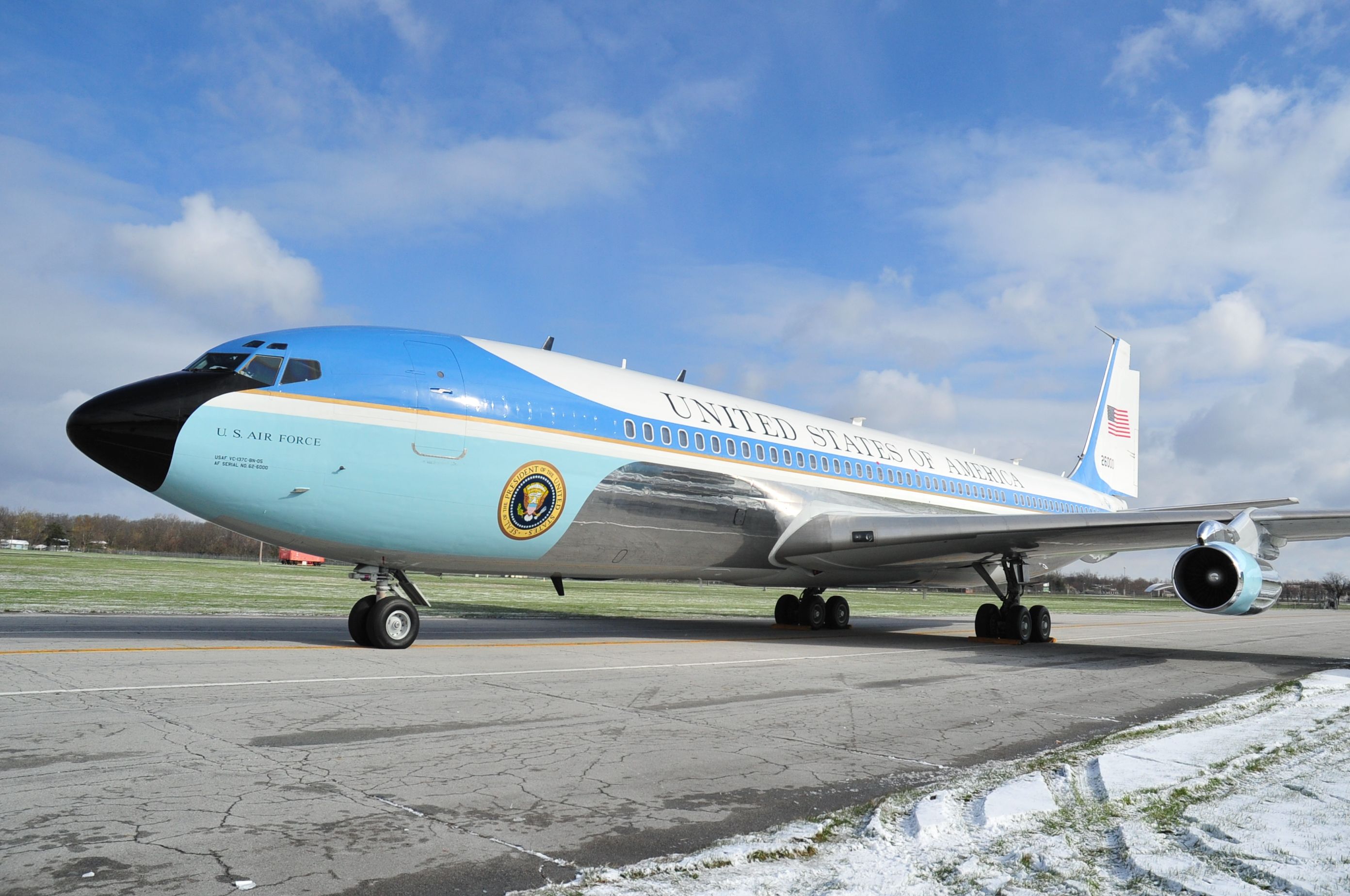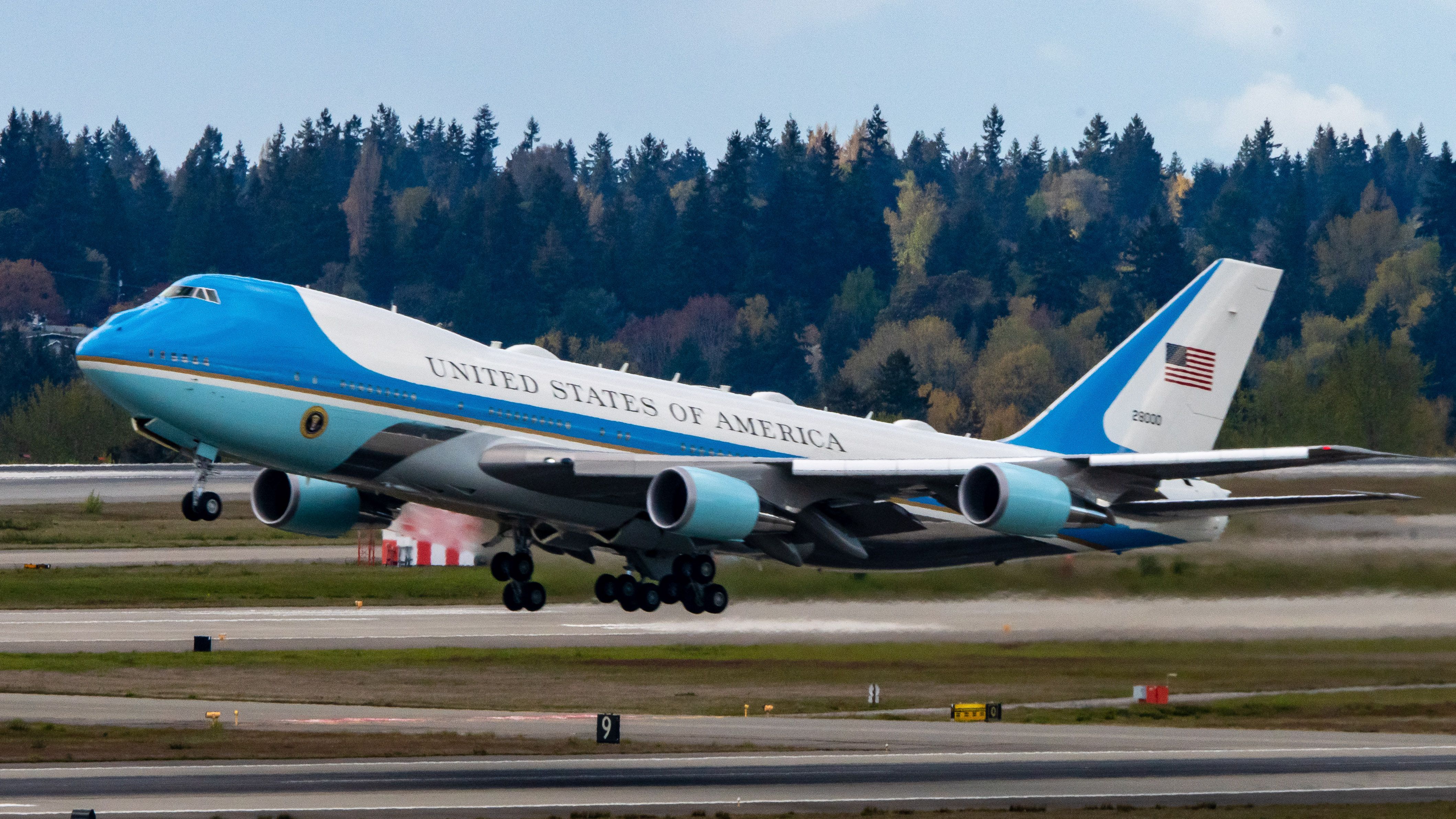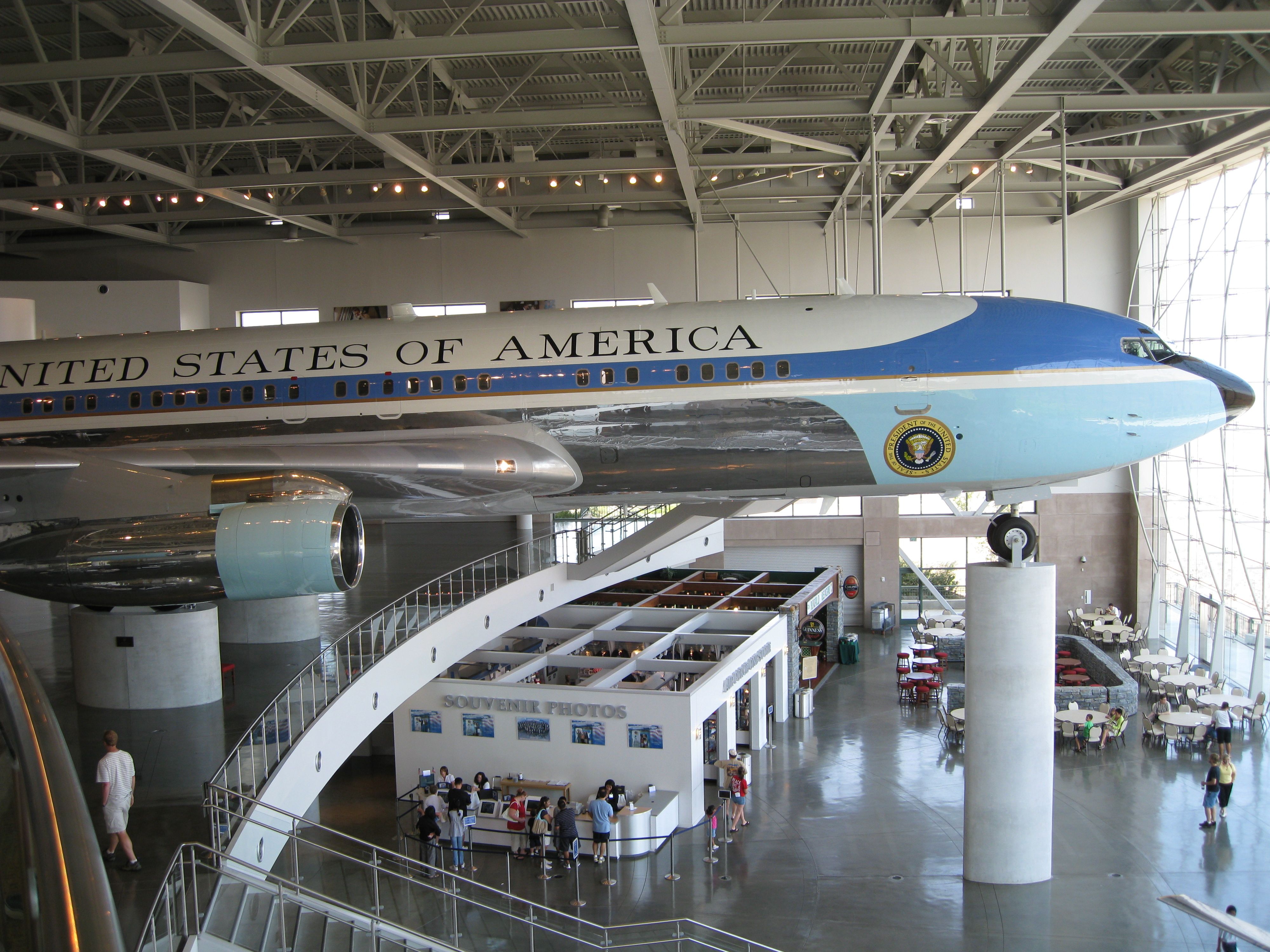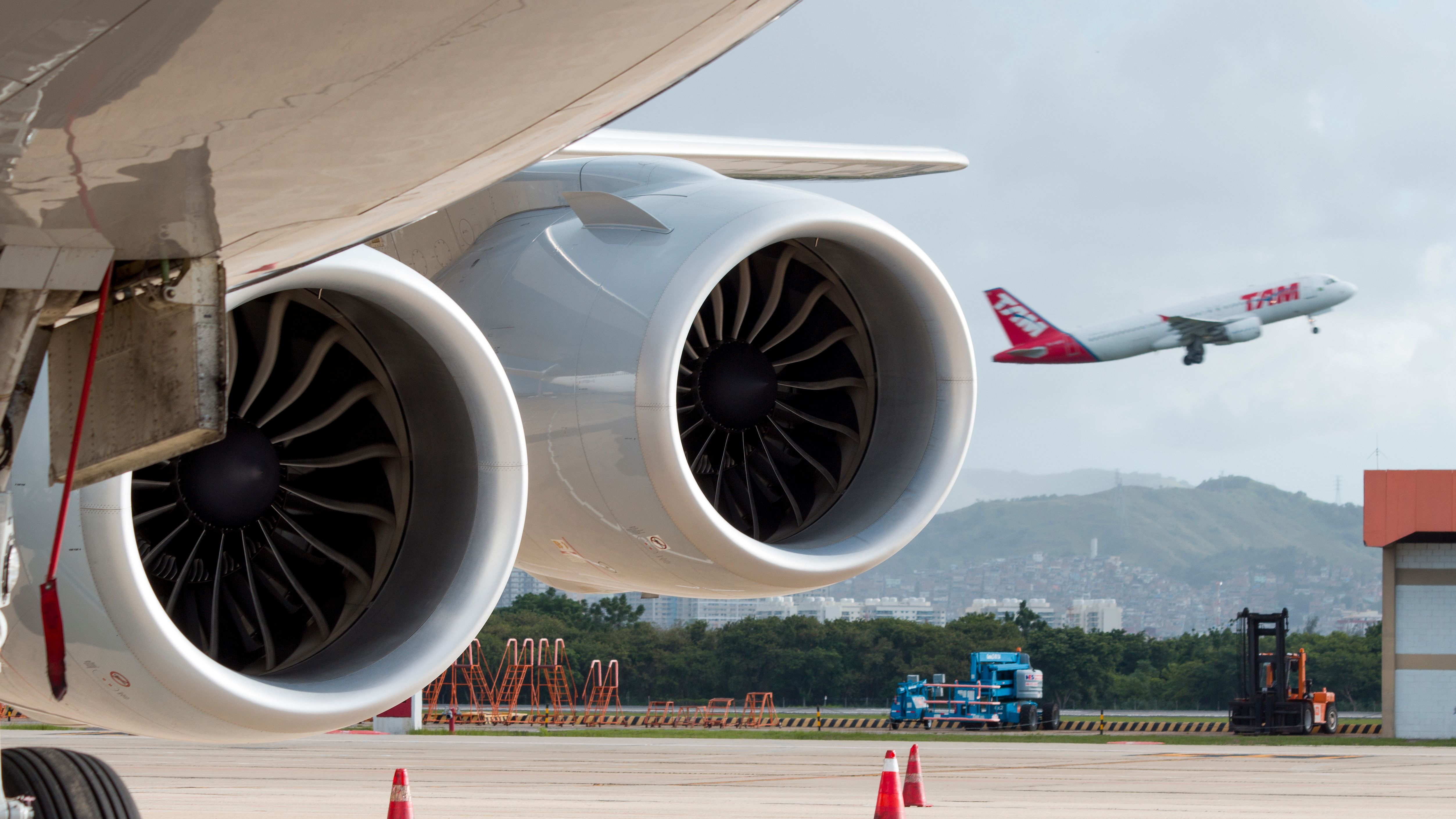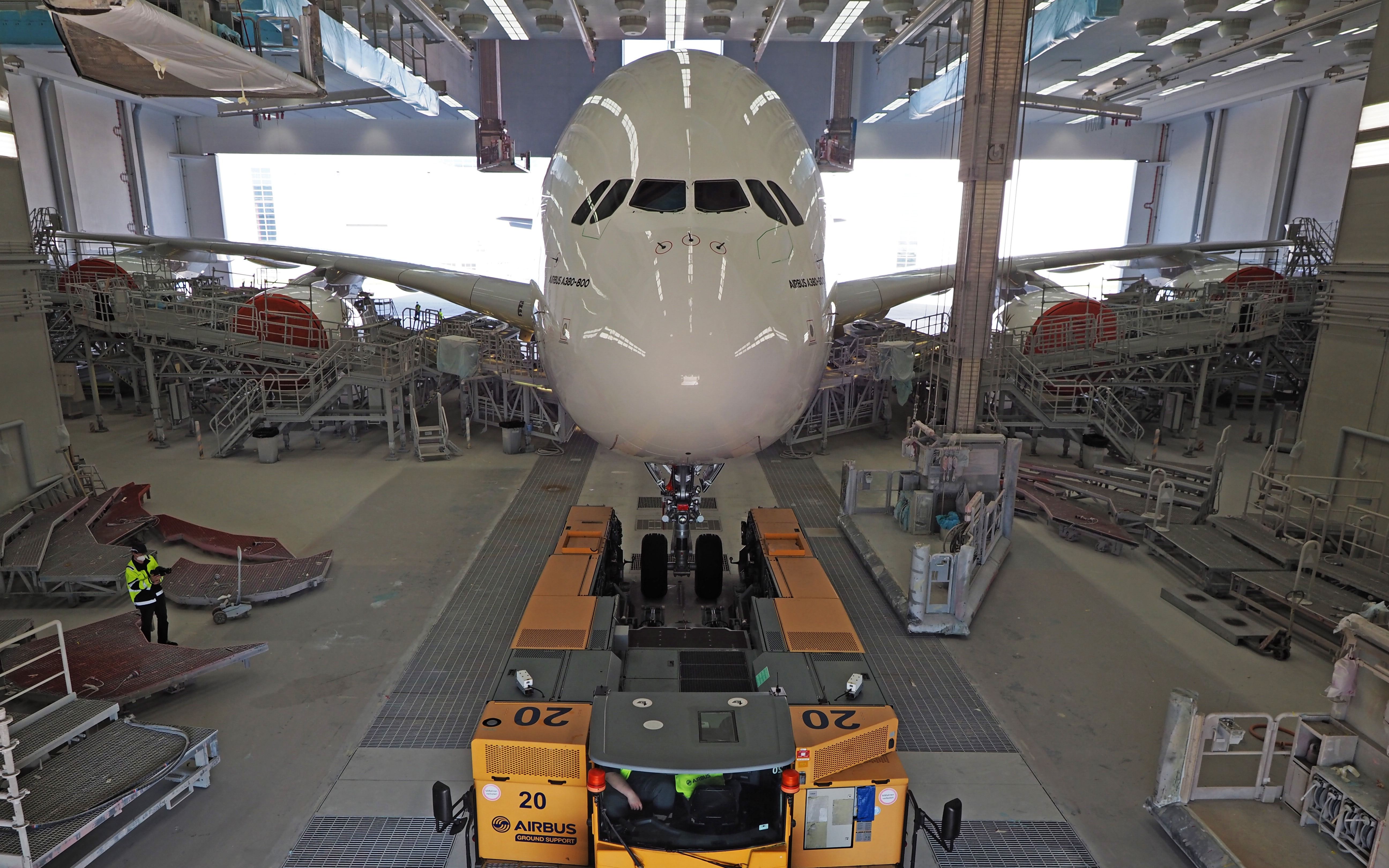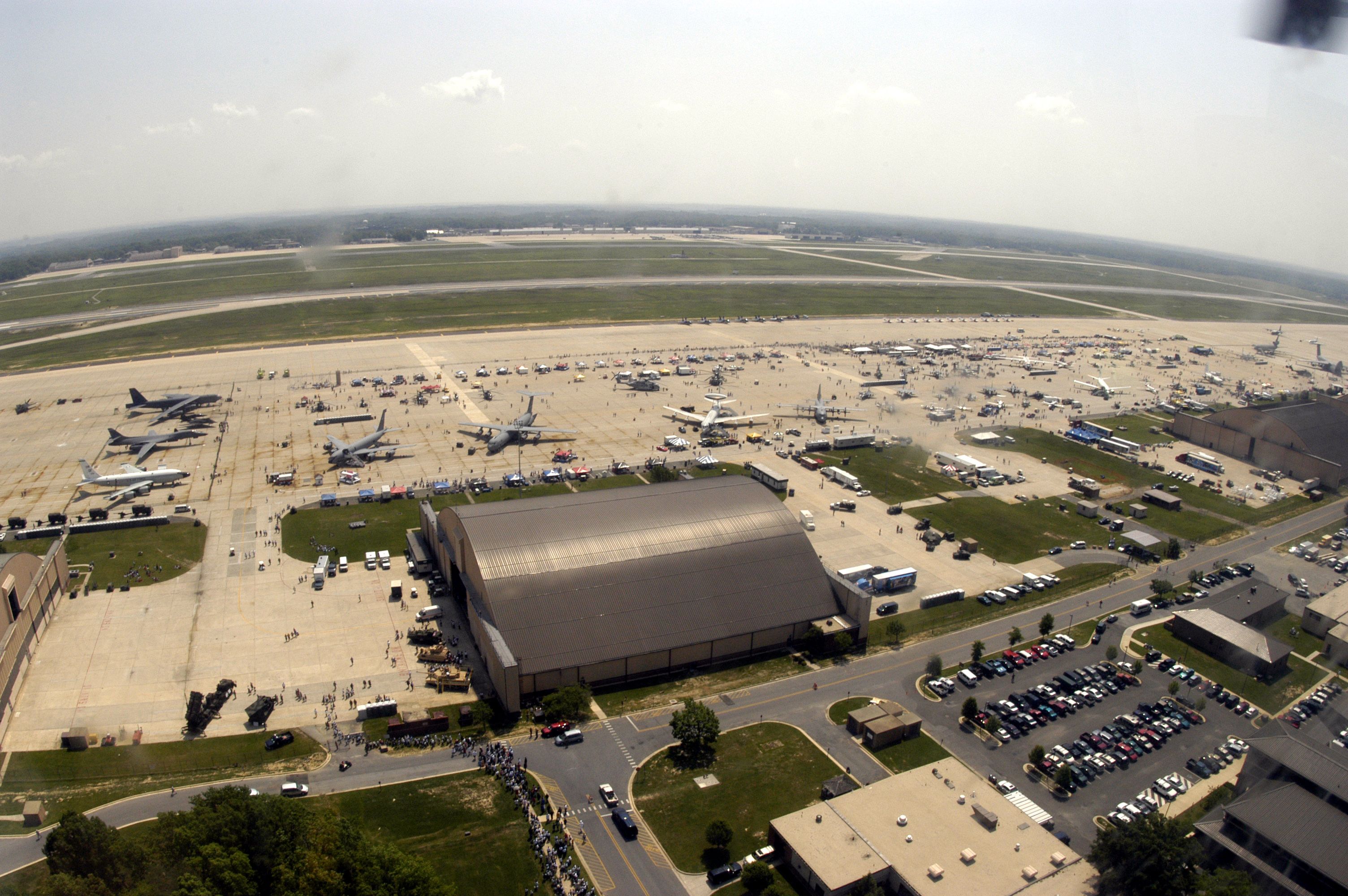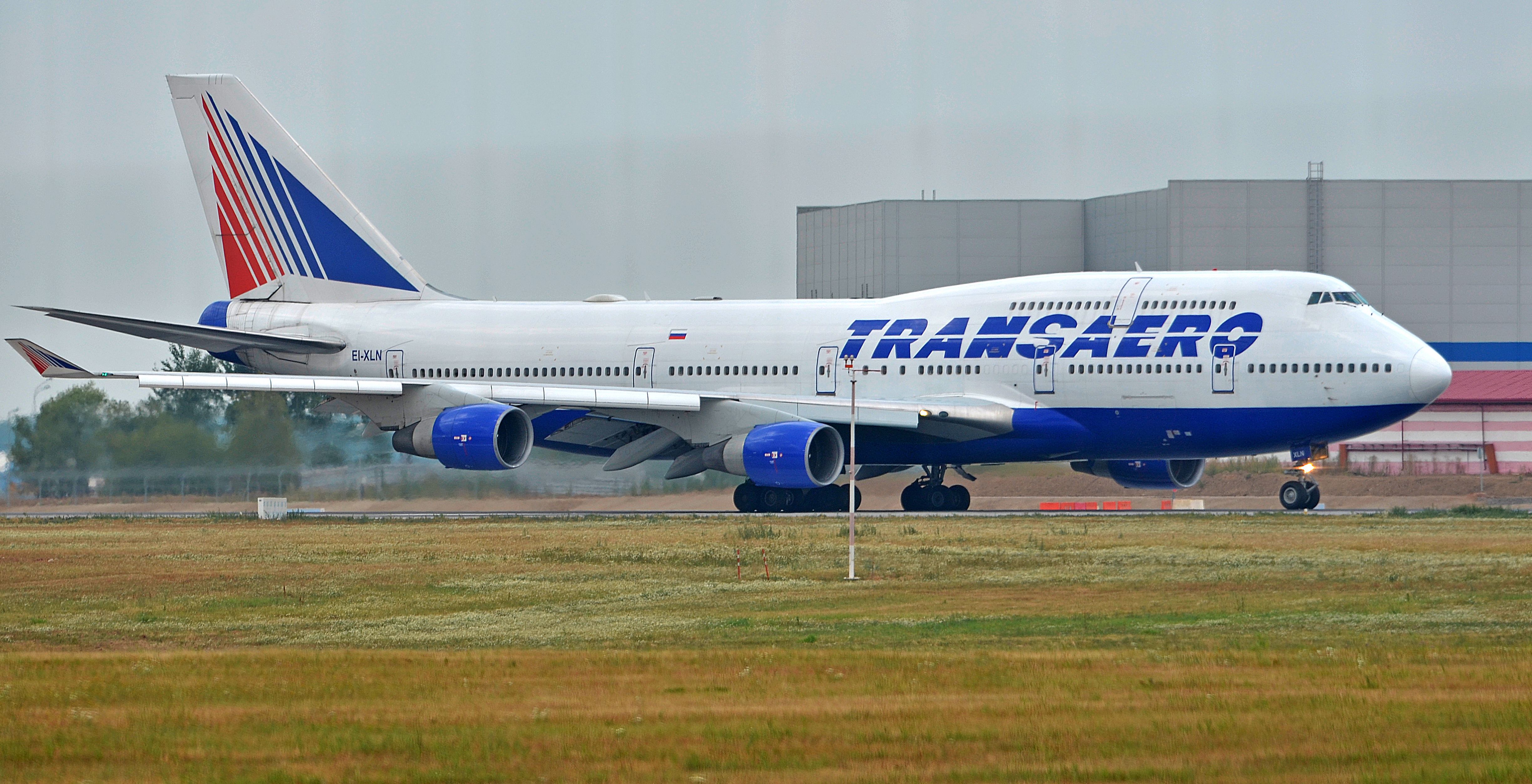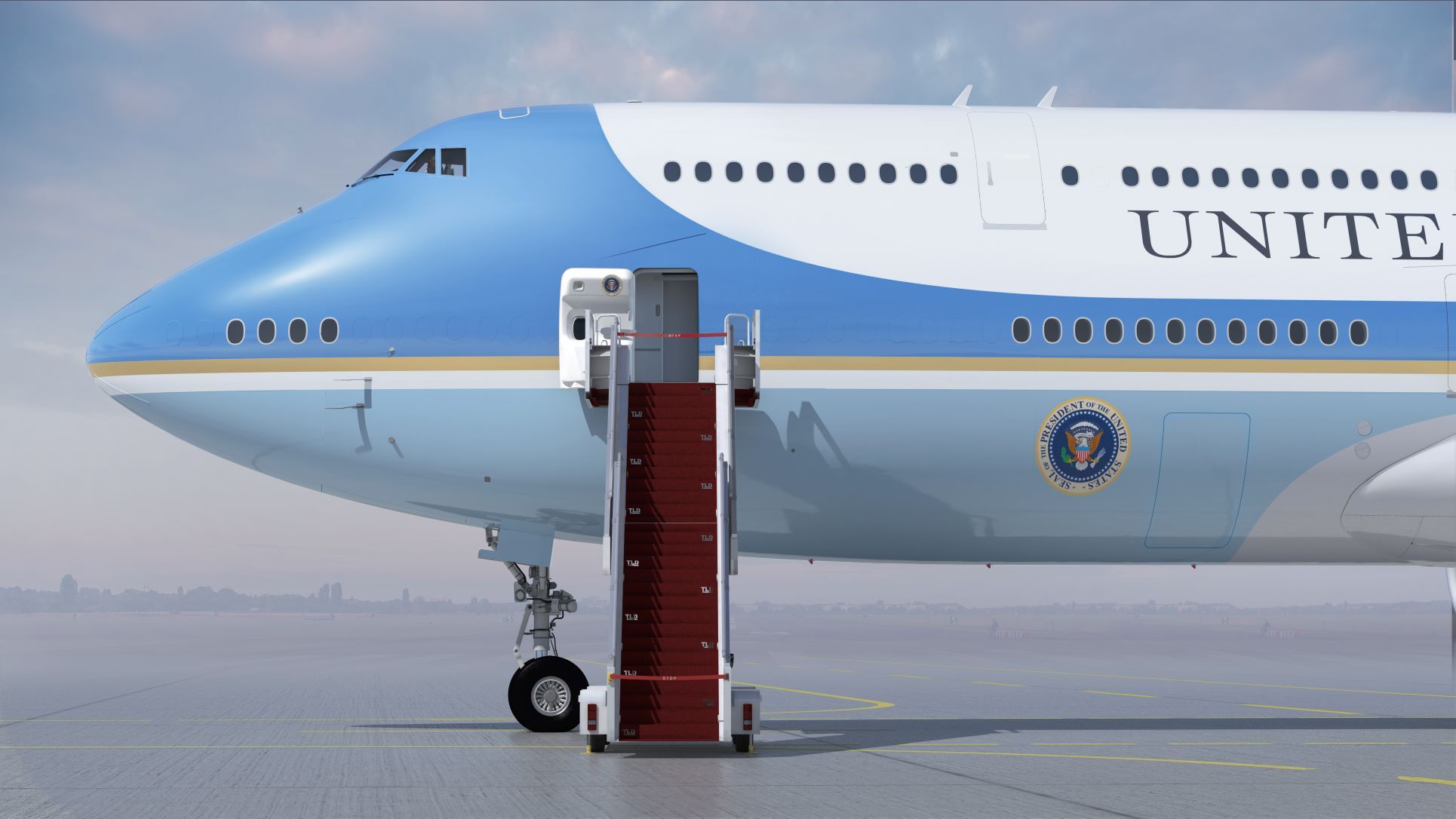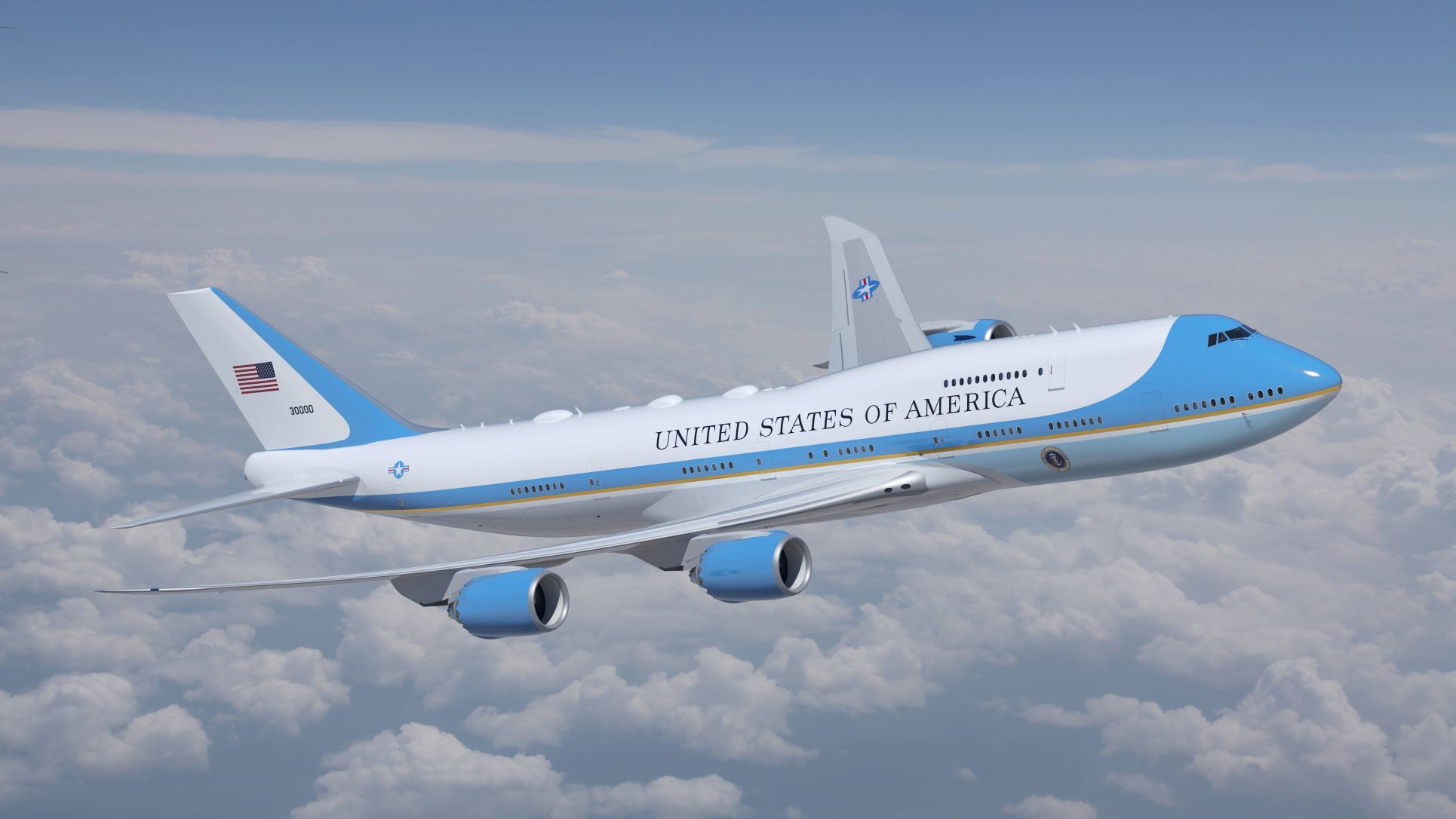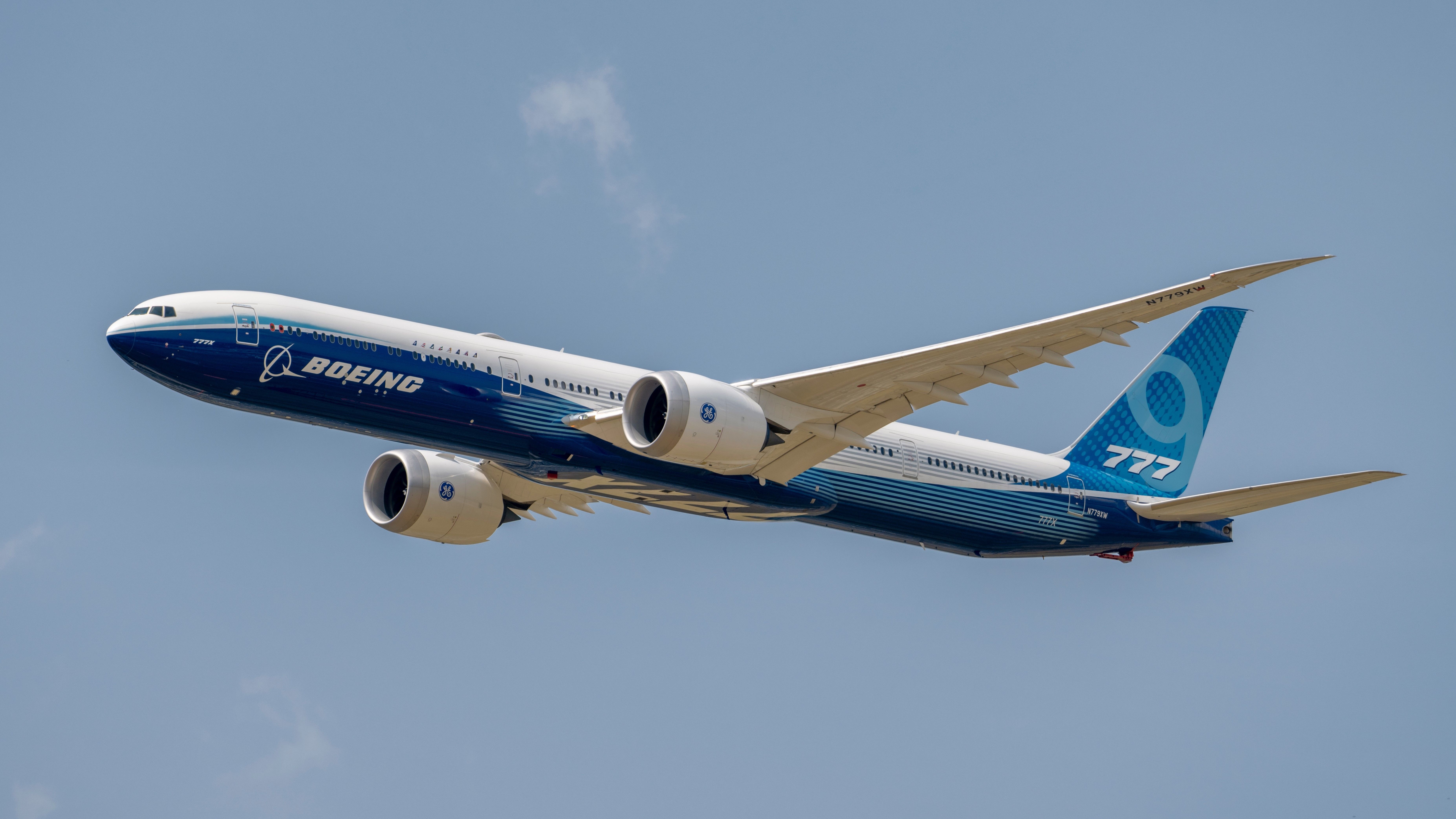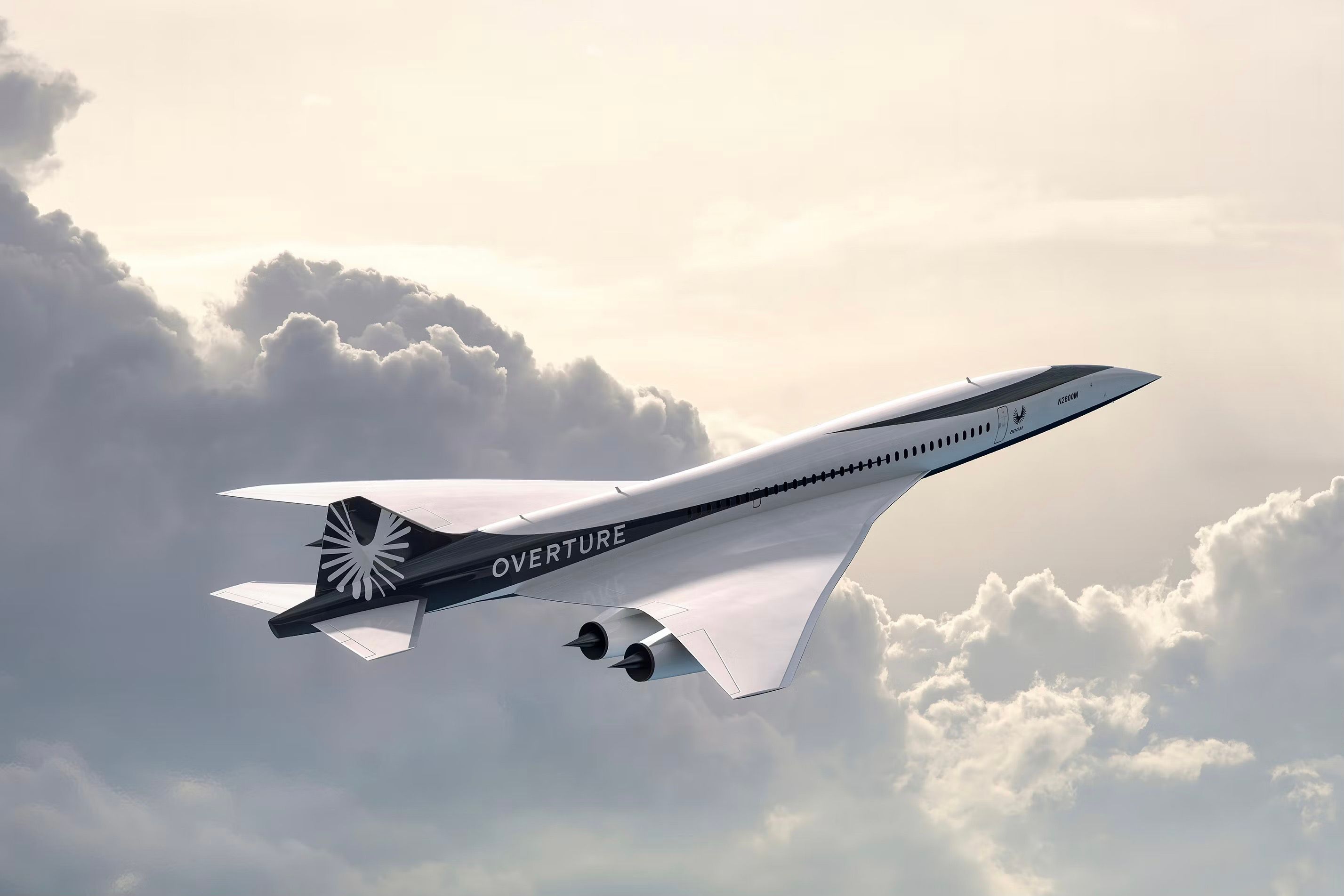Air Force One is one of the most recognizable call signs in the world. It refers to any US Air Force aircraft carrying the serving US President. For over 30 years, this has been associated with two modified 747-200 aircraft. However, this is set to change soon with two new 747-8 aircraft under development. What do we know so far about these exciting new aircraft?
Updating ‘Air Force One’
Previous Presidential aircraft
Before we look at the new presidential 747s, a quick look at their predecessors is worthwhile. Presidential travel in the US began in 1910, with Theodore Roosevelt taking flight in Wright Flyer aircraft at Kinloch Field in Missouri (although he had left office by then).
Franklin Roosevelt became the first serving President to fly – he flew to Morocco in 1943 on a Pan American World Airways crewed Boeing 314. The first approved, dedicated aircraft was then introduced in 1945 – this was a modified Douglas C-54 Skymaster, nicknamed the ‘Sacred Cow.’
It was replaced by a C-118 Liftmaster (a military-modified Douglas DC-6 aircraft) and then a Lockheed Constellation. This aircraft, nicknamed Columbine II, was the first to take the ‘Air Force One’ callsign following an incident when one of President Eisenhower’s flights was confused with a commercial flight.
Jets took over the role in 1959 when President Eisenhower introduced a modified Boeing 707 (SAM 970). This was upgraded with another modified 707 (SAM 26000) under President Kennedy. SAM 26000 served three Presidents, while its successor (SAM 27000) flew under an impressive seven Presidents up until 2001.
The two current VC-25A aircraft
This story of presidential aircraft has led to the two 747s that are famous across the world today. These are two heavily modified Boeing 747-200 aircraft, known as VC-25A. They were ordered during President Reagan’s term, having beaten McDonnell Douglas with the DC-10 as the only other proposal.
Photo: Joe Kunzler | Simple Flying
However, it was President George H. W. Bush who got to take delivery of them in 1990. These have been the flagship Presidential aircraft ever since, carrying Presidents to events and engagements across the US and globally.
Retiring the current aircraft
With the introduction of the new aircraft, the VC-25A 747s will be retired. Their future has not yet been confirmed, but many of the previous aircraft have ended up on display. These aircraft are just too special to head for scrap, as most retired 747s do.
All three 707s, for example, that served as Air Force One have been preserved:
- SAM 970 is on display at the Museum of Flight in Seattle.
- SAM 26000 is on display at the US Air Force museum in Ohio.
- And SAM 27000 is displayed at the Ronald Reagan Presidential Library and Museum in California.
The George and Barbara Bush Foundation has already expressed interest in taking one 747 after retirement, potentially displaying it in his library and museum in Texas. It’s much more of a challenge with a massive 747 than a 707, but surely something can happen!
Selecting the new aircraft
Plans for a replacement for the current VC-25A started to be made over a decade ago. This is not surprising, given the approximately 30-year life expectancy of the 747-200 airframe. By 2009, the US Air Force had already determined the need to replace the aircraft – updating the existing aircraft was considered unfeasible, and replacing them was the most cost-effective option.
As part of an ‘Analysis of Alternatives’ study, the Air Force found that parts and maintenance would become increasingly expensive, time to repair would increase, and costly improvements would be necessary to meet future air traffic control requirements.
Photo: Matheus Obst / Shutterstock
A new 747 was not chosen straight away – as early as 2007, the US Air Force had approached Airbus to consider its widebodies for both presidential aircraft and other military use, as part of a ‘VIP Large Aircraft Recapitalization’ program. According to reporting by FlightGlobal at the time, this included the A380, A340-600, and the A330-200.
The Air Force then issued a notice in 2009 for proposals for replacement aircraft. Airbus, however, did not respond to this, leaving Boeing the only contender. After considering the smaller 787, the larger 747-8 was selected as the best option.
Rejecting the A380
If size is so important for Air Force One, why did the A380 not make it? A contemporary report from The Guardian hinted it might be possible, especially with an Obama administration focus on emissions and fuel efficiency.
Unfortunately, though, Airbus withdrew and declined to submit a proposal for the A380, primarily due to the cost of shifting assembly to the US. This was not viable for just three aircraft and was not in line with Airbus’ North America growth strategy.
Photo: Airbus
In reality, though, it probably wouldn’t have been selected anyway. Its efficiency improvements are based on passenger use, and it would likely be worse in VIP use. It would also suffer the same operational limitations that airlines have struggled with, not to mention that US-built aircraft have always been used for presidential travel.
The new 747-8 VC-25B aircraft
An expensive program
The decision to replace the current aircraft with two Boeing 747-8 aircraft was announced in January 2015, under the Obama administration. Even before entering office, Trump began to voice his objection to the high costs, estimated at over $5 billion. For example, in December 2016, he tweeted:
“Boeing is building a brand new 747 Air Force One for future presidents, but costs are out of control, more than $4 billion. Cancel order!”
Trump did enter negotiations to reduce the price, and the White House claimed he succeeded in reducing the cost by $1.4 billion. He likely did reduce it (switching to already manufactured aircraft will have contributed), but it is unclear by how much. Several proposals, such as only equipping one of the aircraft for Presidential travel, were rejected.
Still costing $5.3 billion
In any case, modifying and equipping such a specialized aircraft is always going to be expensive. Total costs of the project are expected at around $5.3 billion – this includes the full costs of refitting the aircraft for service, testing and deployment, and even new hangar facilities at Andrews Air Force Base.
The planemaker accepted a fixed-cost deal for the Presidential contract, a decision it now says it regrets as the project runs years behind schedule and billions above its initial budget. For comparison, according to the LA Times, the cost of the last development program for the VC-25A 747s was only $660 million.
Acquiring Transaero aircraft
In August 2017, it was revealed that the USAF would not purchase new Boeing aircraft – instead, it would acquire two 747-8I aircraft originally intended for the Russian airline Transaero. The amount paid for the aircraft was not revealed (but should, of course, be less than the almost $400 million new price).
Transaero ordered the two aircraft in 2011, but it faced bankruptcy in 2015 – Aeroflot acquired much of its fleet but did not want the new 747s. Transaero had ordered four of these aircraft; conveniently, only two of these had been built.
Following flight tests, the two 747-8s were flown to Southern California Logistics Airports in Victorville for storage. Such desert storage is, of course, often associated with retired aircraft. However, the same principles of storage in a dry and low humidity environment help preserve aircraft while out of use. The aircraft (with registrations N895BA and N894BA) have now transferred to Boeing’s facility in San Antonio, Texas.
Onboard Equipment
Following the acquisition of the two 747-8s, Boeing began work to refit the aircraft for presidential service. We are unlikely to know much about the new aircraft’s technical equipment, as this is mostly classified.
Photo: United States Air Force
However, we know from the huge budget that there will be some impressive equipment. Some of the things this is likely to include are:
- Hardened fuselage shell to withstand electromagnetic pulses
- Installing retractable airstairs to allow the aircraft to operate without external stairs or a gate
- Full countermeasures against missile attack and missile warning systems
- Inclusion of military GPS into the aircraft flight management system
- Enhanced ability for steep take-off and landing and evasive maneuvers in-flight
- Extensive communication facilities (30 years on, these will be much improved over the current facilities)
- Installation of a second Auxiliary Power Unit (APU). This is also included on the current 747s and allows redundancy in independent operation on the ground.
One thing that will be missing is the ability to refuel mid-air. This was added to the current aircraft, enabling them to stay airborne for extended periods. While this was viewed as useful in the event of war or ground attack, it has never been used – the new 747s will, like ‘normal’ jets, have to land when it’s time to refuel.
The interiors and design
First Lady Nancy Reagan heavily influenced the current 747s. She wanted the design to reflect her native US Southwest home. President Reagan ordered the aircraft, and they were completed (and first flying) by 1987. But they did not enter service until 1990 after Reagan had passed the office to George H Bush.
The new Air Force One’s will include the full range of interior facilities seen in the current 747s. This includes a full suite of rooms for the President (in the aircraft’s nose), office and meeting space for staff, and a large conference room. There will also be a full medical facility.
The rear of the current aircraft has the most similar layout to a standard commercial aircraft, with a seating area for press. As it remains standard for a press contingent to travel with the president, it would seem likely this layout will continue.
Changing the livery
The livery has been a contentious issue so far. The current VC-25A’s are painted in a very recognizable blue and white color scheme, incorporating a design by the French-American designer Raymond Loewy. He is also credited with the TWA logo and work on BP, Shell, Greyhound, and plenty of US railroad designs. It appeared first on one of the Boeing 707s (SAM 26000) introduced by President Kennedy in 1962.
However, Trump proposed a new livery in a shift away from the almost 60-year tradition. He opted for a more patriotic red, white and blue color scheme. However, as many expected, Trump’s livery was eventually scrapped by the Biden Administration.
Aircraft delivered by 2027
The first aircraft is currently due to be delivered by 2027 – pushed back from an initial delivery date of 2024 – with the second plane slated for a 2028 delivery. With President Biden’s first term in office due to end in early 2025, he won’t be flying on ‘Air Force Biden’ unless he wins a second term.
Photo: United States Air Force
Boeing recently revealed that the project cost has gone $1 billion over budget per plane, driven by engineering changes, labor instability and supplier re-negotiations. Its executives have previously expressed their regrets about taking on the project, which has put the company at least $2 billion in the red.
Looking ahead – a supersonic Air Force One?
With the new 747-8s still some time from delivery, the Air Force has started to look even further ahead. Of course, it will be some time (and several presidential terms) before a replacement for the 747-8s is considered. With the 747 now ended, the replacement will be something else – perhaps the new 777X would be a good fit, if the President can make do with a bit less space.
Photo: Tom Buysse | Shutterstock
But we do know that the US government has started looking at the possibility of supersonic transport. The US Air Force has partnered with Boom Supersonic to look at possibilities for VIP and presidential use. Boom hopes to have the commercial 55-seat Boom Overture flying between 2025 and 2027, so VIP use could be possible soon.
Photo: Boom Supersonic
What are your thoughts about the upcoming ‘Air Force One’ Boeing 747-8 jets? Let us know what you think about the project in the comments.
Source: FlightGlobal, The Guardian, LA Times

